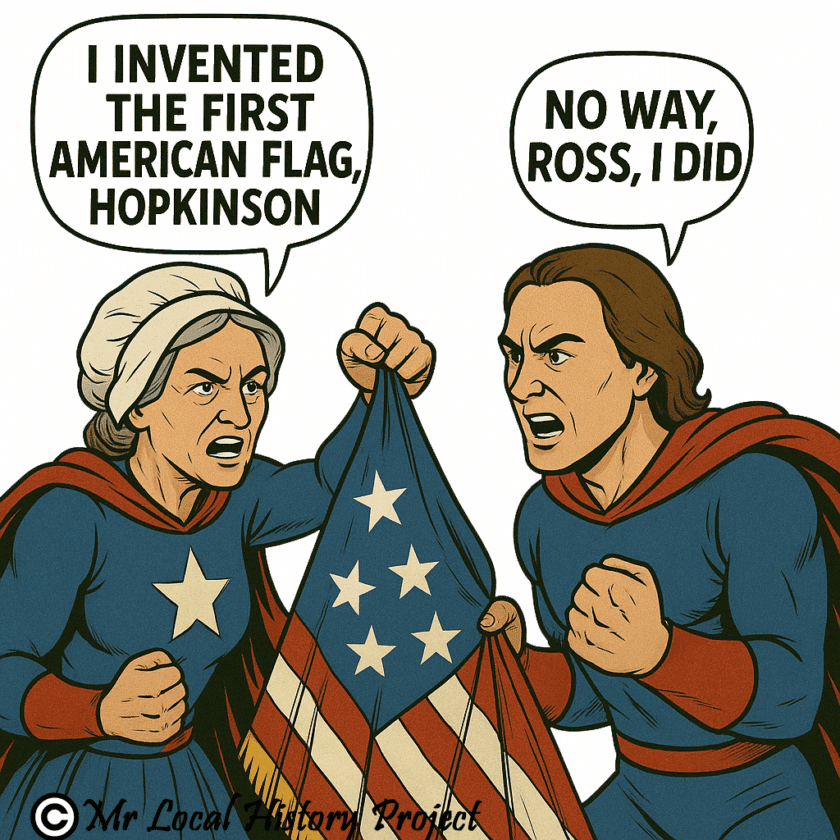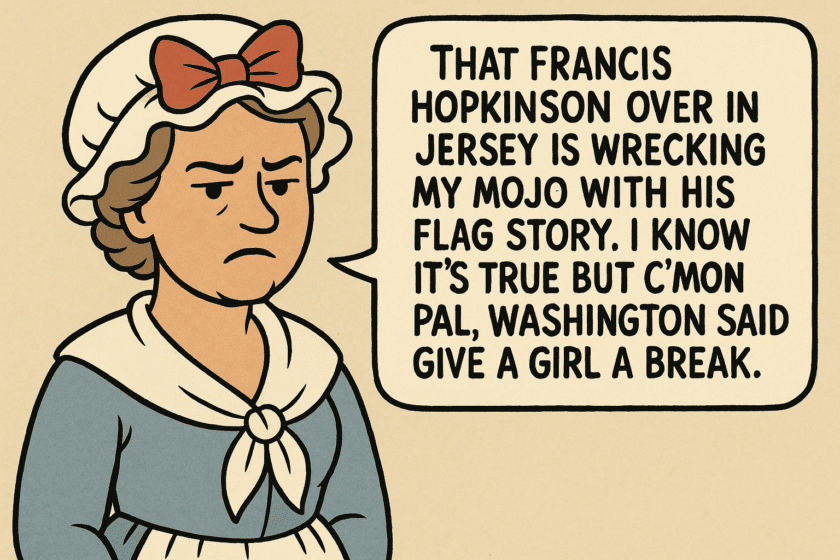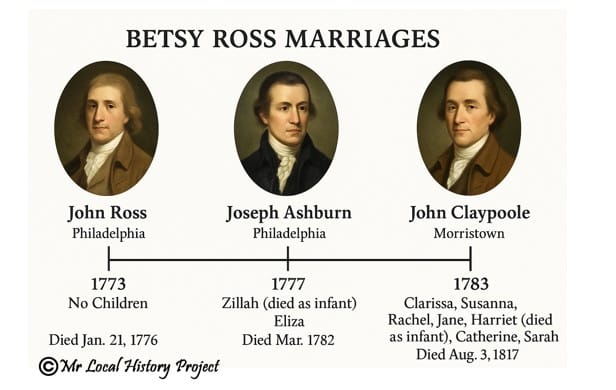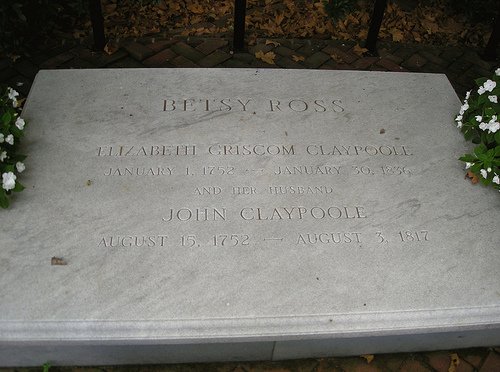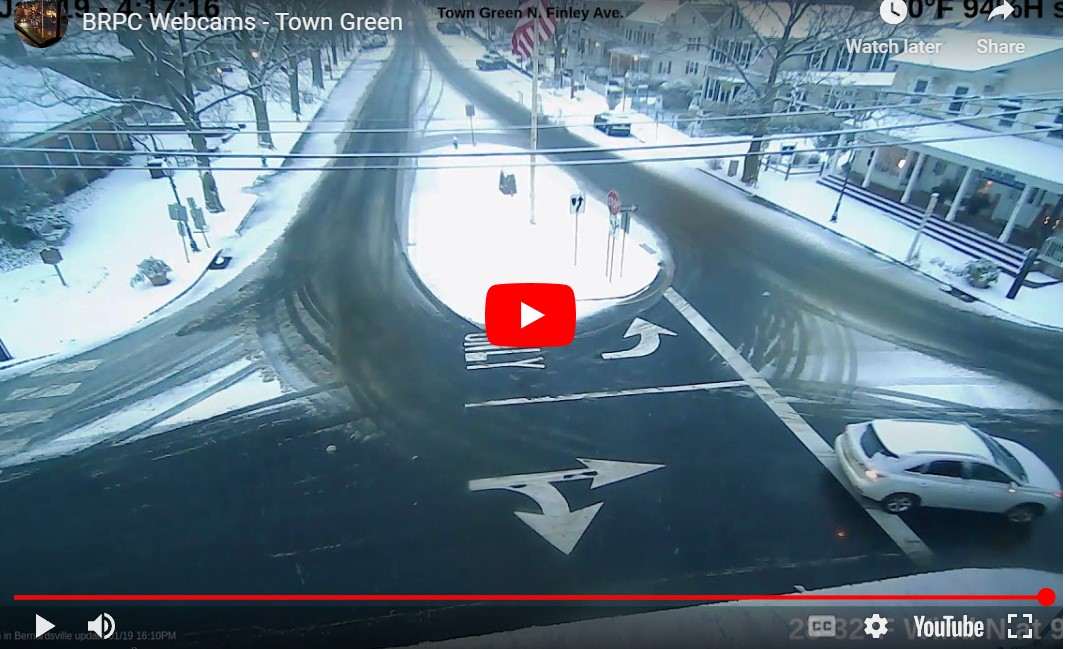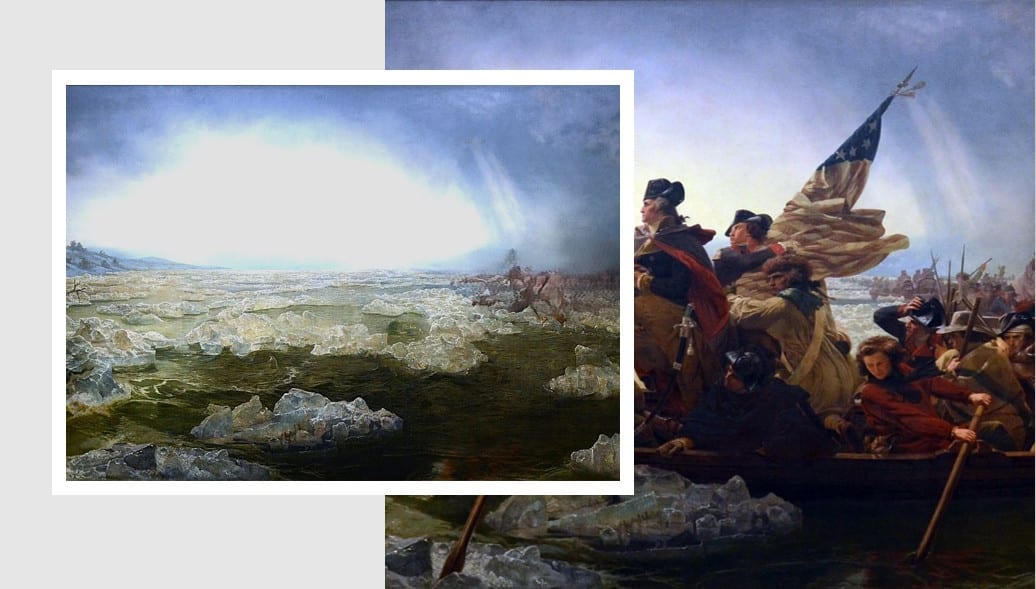
Flag Designer Betsy Ross and Her Basking Ridge Ties – Lore or Fact?

“Here lies the woman who made the first banner containing the stars and stripes after that honored old ensign had been adopted, June 14, 1776.”
July 4, 1876 speech given by E.M. Pennington in Basking Ridge, NJ
Betsy Ross’s name at her death was actually Elizabeth (Betsy) Griscom Ross Ashburn Claypoole. Claypoole was a Morris County man.
June 14 commemorates Flag Day, the birthday of the first U.S. flag, which was supposedly made by Betsy Ross (1752-1836) at the request of George Washington. It is also the best-known symbol of America. Mrs. Ross, a seamstress, has been disputed as to the original designer, but apparently, Ross came up with the idea of five-point stars. According to Ross’s grandson, Ross was visited in her home in June 1776 by Robert Morris, George Ross (her husband’s uncle), and George Washington, who asked her to create a new nation’s flag. Betsy was only 24 years old at the time.
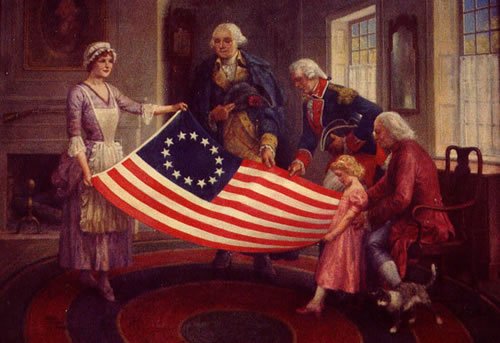
Born in Gloucester City, New Jersey, on January 1, 1752, Betsy died in Philadelphia at the age of 84 on January 30, 1836. She was the eighth of seventeen children and was raised a Quaker, but that denomination shunned her after eloping with John Ross, an Anglican/Episcopalian, on November 4, 1773.
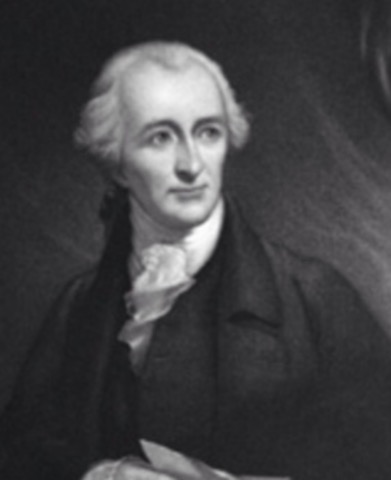
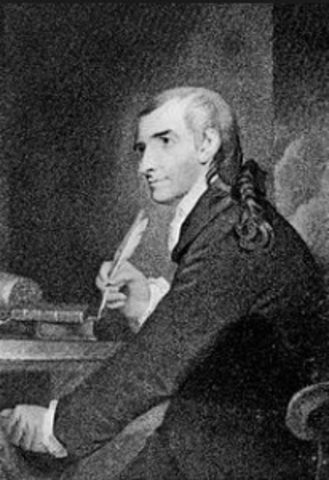
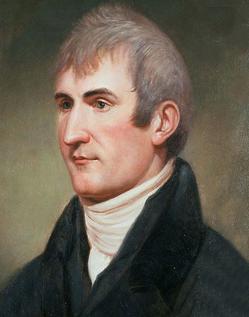
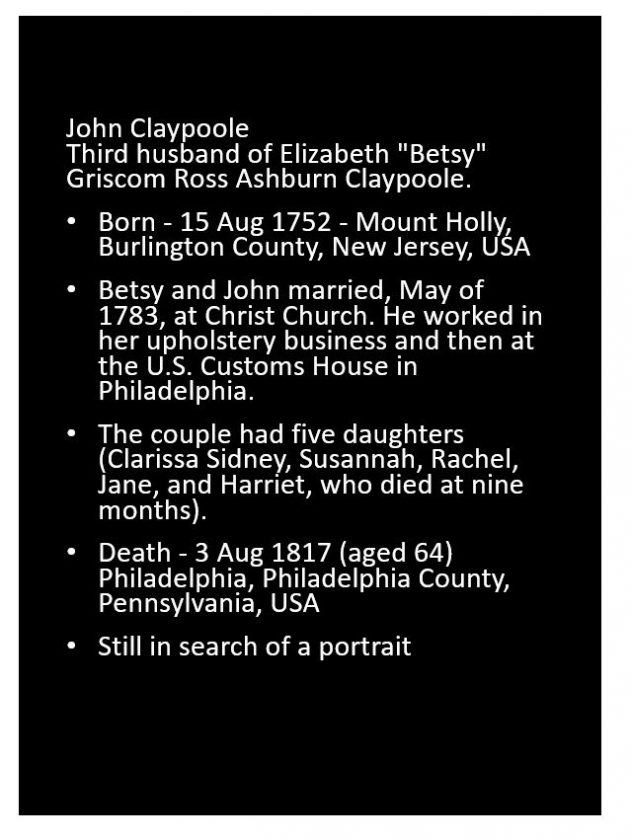
John Claypoole was born in 1752 to an artisan and merchant family in Philadelphia. He was an early supporter of the American Revolution. In 1781, the British ship Enterprise captured his ship off the coast of Ireland, and Claypoole became a prisoner of war, first in Ireland and then at the notorious Old Mill Prison in Plymouth, England.
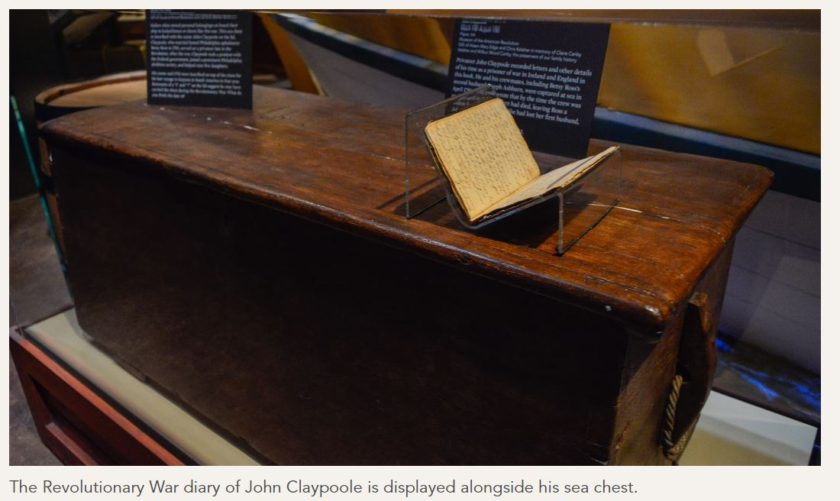
John Claypoole’s personal chest is now on permanent display at the Museum of the American Revolution in the “War at Sea” gallery.
Burial Site
Today, Betsy Ross’s officially listed grave is at the Betsy Ross House on Arch Street in Philadelphia. Or is it? Is it correct, or is it just a front?
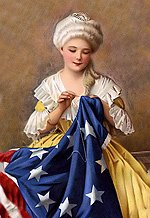
Betsy learned of her 2nd husband’s death from her old friend, John Claypoole, another sailor imprisoned at the brutal Old Mill prison. After Claypool’s release from prison, on May 8, 1783, Betsy was married for the third time, the ceremony performed at Christ Church. Her new husband was none other than old friend John Claypoole.
Betsy Ross Claypoole convinced her new husband to abandon the life of the sea and find land-lubbing employment. Claypoole initially worked in her upholstery business and then at the U.S. Customs House in Philadelphia. The couple had five daughters: Clarissa Sidney, Susannah, Rachel, Jane, and Harriet, who died at the age of nine months.
Claypoole passed on in 1817 after years of ill health, and Betsy never remarried.
Historian Mentions Ross (Claypoole) Burial
Accounts of Betsy Ross Claypoole’s burial in Basking Ridge were prevalent in the early 1900s. In 1995, while researching a book about the Bernards Township Library, I discovered scrapbooks compiled by the late Dr. William Pennington that contained clippings about the Ross burial in Basking Ridge.
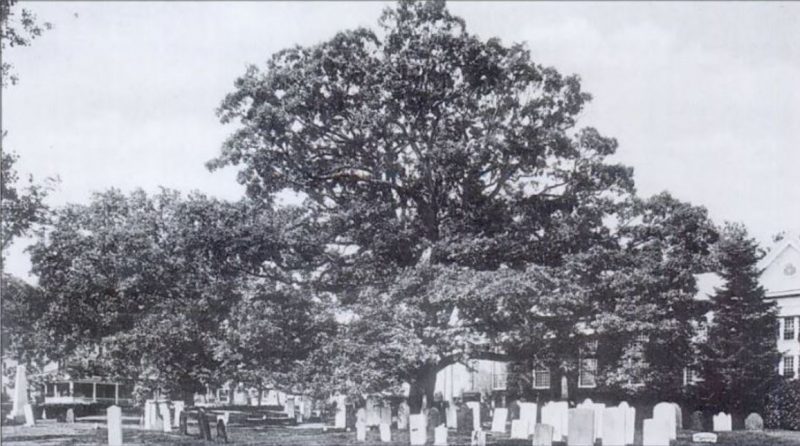
The earliest mention was in a speech given by E.M. Pennington (his relationship to Dr. Pennington is unknown) on July 4, 1876. He stated, “Here lies the woman who made the first banner containing the stars and stripes after that honored old ensign had been adopted, June 14, 1776.” The speech was made near the revered old oak tree (in Basking Ridge, NJ).
What Does the Betsy Ross Organization Say?
The Betsy Ross House Organization reported that the seamstress had been buried three times due to city expansion in Philadelphia. One problem is that the Presbyterian Church’s burial records are incomplete. Ross was married three times and died as Mrs. John Claypoole. Her late first and second husbands were John Ross and Joseph Ashburn, respectively.
Ironically, the local historical society had a large framed broadside announcing the 100th Anniversary of America’s freedom, featuring a parade, picnic, and an oration delivered by E.M. Pennington, a noted orator, on July 4, 1876. In his speech, he referred to the fact that “beneath our feet are the mortal remains of the woman who sewed our first stars and stripes.”
In a July 4, 1876, centennial address, a noted orator referred to a spot under the oak tree as the final resting place of Betsy Ross, maker of America’s first flag. In 1901, Sexton John Craig recalled seeing a tombstone for Betsy Ross but said it had mysteriously disappeared. There are 35 Revolutionary War veterans and those of the country’s other wars buried at the cemetery.
The second reference in Dr. Pennington’s scrapbooks was a June 1901 news clipping: “Oak Marks Grave of Betsy Ross”; “Maker of the First American Flag Buried Under a Giant Tree in Basking Ridge”; “Her Headstone Has Been Stolen”.
“Betsy Ross Supposed Grave to be Remarked”; “Under the Oak Shown Here Lies the Supposed Body of Betsy Ross.”
Philadelphia North American on June 21, 1902 about Basking Ridge, NJ
The article stated that residents of Basking Ridge were about to raise a fund “to mark the spot in the old Presbyterian Cemetery where they say lies the body of Betsy Ross.”
June 16, 1901, Ross Story Comes Out Again
A Sunday, June 16, 1901, a newspaper headline read :
“Oak Marks Grave of Betsy Ross”. A sub-heading added “Maker of the First American Flag Buried Under A Giant Tree In Basking Ridge.” Beneath the branches of the oak is Mrs. John Claypoole, known in history as Betsy Ross, the maker of the first American flag. The village people are very proud of the fact that the remains of Betsy Ross rest in the old burial ground.” But the article went on to add that her “very comely tombstone” had been stolen two years earlier. Villagers apparently believed the tombstone was taken by “some historic relic hunters.”
A second article from the Philadelphia North American on June 21, 1902, carried the headline “Betsy Ross Supposed Grave to be Remarked”. “Residents of Basking Ridge were about to raise a fund to mark the spot in the Old Presbyterian Church where they say lies the body of Betsy Ross,” the article said…” John Craig, the venerable sexton of the church, always points out to visitors the location of the grave at the foot of the giant oak.”
Two other sources made a passing reference to the alleged burial site. The Revolutionary War Scene in New Jersey, written by Robert V. Hoffman in 1942, and “History of Basking Ridge,” based on a play by the Church of St James Holy Name Society in 1950. Inquiries to the Betsy Ross House, Public Library of Philadelphia, Philadelphia Historical Society, and The Philadelphia Inquirer proved negative. Officials insist Betsy Ross was interred in a park next to the home where she and her family lived at Arch Street in Philadelphia.
1942 Book mentions Ross Again
In 1942, a book about the revered historic 600-year-old white oak in Basking Ridge, The Revolutionary Scene in New Jersey, includes: “The tradition persists that Betsy Ross, who made the first American flag, is buried in the yard.” Authorities in Philadelphia deny any truth to the references as mentioned earlier; however, Betsy Ross was married three times: John Ross, Joseph Ashburn, and John Claypoole. Presumably, she would have been listed as Elizabeth Claypoole at her death. In the 19th Century, Claypoole families were residing in the Morristown area. John Claypoole was Betsy’s third husband.
Over the past two decades, more than half a dozen references to this story have been uncovered in the Brick Academy archives and the Bernards Township Library history room files. The first mention appeared in a clippings scrapbook compiled by retired physician Dr. William Pennington, who lived around the turn of the 19th century and spent much of his life collecting newspaper articles.
Betsy Ross Facts and Footnotes
- Betsy Ross was born on January 1, 1752, and died at 84 on January 30, 1836.
- Betsy had seven children, 5 of whom lived to adulthood. She had no children with John Ross, however.
- At age 21, Betsy eloped across the Delaware River to Gloucester, New Jersey, and was married at a tavern.
- She was the 8th of 17 children.
- She claimed to have done tailoring for George Washington.
- John Claypoole and Betsy were married on May 8, 1783. A year later, Betsy returned to her Quaker roots when she and her husband joined the Society of Friends, also known as the Society of Free Quakers.
- In late May or early June 1776, according to Betsy’s account, she had a fateful meeting with the Committee of Three, comprising George Washington, George Ross, and Robert Morris, which led to the sewing of the first flag. See more about this on the Betsy Ross and the American Flag page.
- She has been buried in three (maybe 4) different locations: Free Quaker burial ground at South 5th St. near Locust, Mt. Moriah Cemetery, and on Arch Street in the courtyard adjacent to the Betsy Ross House, and now perhaps Basking Ridge, New Jersey.
- A prominent Philadelphia bridge is named in her honor.
The original article was written by Bernards Township Historian June O. Kennedy, who was in the newsletter in May 2009 and June 2004.
Updated: Bernards Township Local Historian Brooks Betz.
Flag Rivalry Fun
